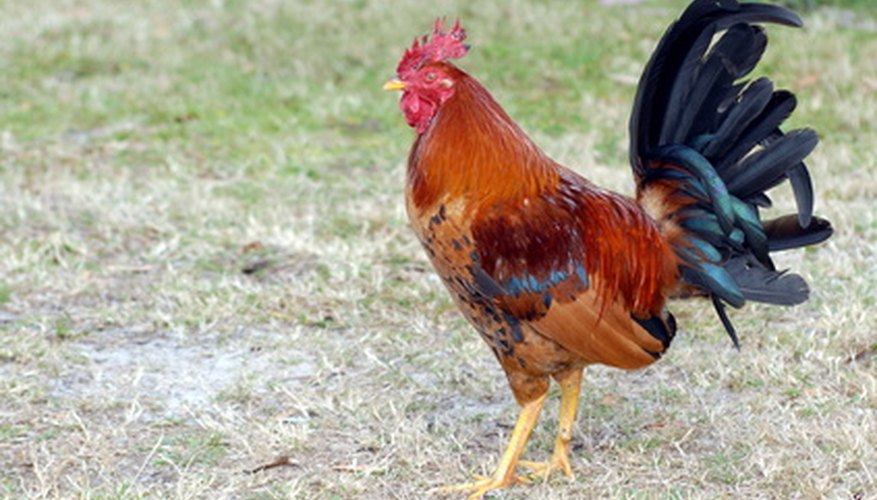It can be difficult or impossible to determine the sex of a sexually immature chick. However, after puberty, chickens develop very noticeable secondary sex characteristics, making it very easy to discern the difference between the two genders. Unless a chicken has been caponised, or neutered, at a young age, or has a rare birth defect affecting its sexual development, it is very easy to determine its sex. When in doubt, consult a veterinarian or experienced breeder.
Look at the chicken's head. A rooster, or male chicken, will have a large, brightly coloured comb, which is the crest of flesh on top of its head. Roosters also have ostentatious wattles, which are flaps of flesh hanging below the animal's beak. Some breeds have larger combs or wattles than others.
- It can be difficult or impossible to determine the sex of a sexually immature chick.
- Roosters also have ostentatious wattles, which are flaps of flesh hanging below the animal's beak.
Examine the chicken's colouration, particularly on and around the tail. Roosters are much more colourful than hens and generally possess large, brightly coloured tail feathers. A hen's feathers are generally white, ruddy or brown.
Look at the feathers on the chicken's neck. A rooster has long, thin neck feathers with pointed tips, while a hen's neck feathers are short and round by comparison.
Listen for vocalisation. In general, only roosters express the loud, musical crow characteristic of the species. Hens tend to cluck and caw, but their vocalisation are shorter and less impressive than those of roosters.
- Examine the chicken's colouration, particularly on and around the tail.
- Hens tend to cluck and caw, but their vocalisation are shorter and less impressive than those of roosters.
Monitor the bird's social behaviour. Roosters are significantly more aggressive than hens and tend to strut and vocalise for human attention. A hen is generally docile and passive, both around humans and around other birds.
Watch the chicken for several days, checking its nest site for eggs or shells. If your chicken has laid an egg, it is certainly a hen, even if it displays masculine behaviour or ostentatious plumes. If it does not lay eggs within a few days or weeks, it is probably a rooster.
